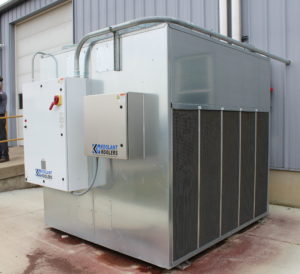Process Cooling Magazine recently shared an article written by Glen Dimplex Thermal Solutions entitled “Improving Productivity and Performance with a Central Chiller.”
Using a central chilling system has many advantages that contribute to improving ambient conditions, product quality and production time.

Manufacturing processes can produce adverse ambient conditions that can affect employees, production uptime and product quality. Using ancillary equipment with production equipment can produce excess heat in the building, sometimes increasing the temperature as much as 20°F (11°C) or more. These temperature fluctuations can create a difficult environment for employees as well as equipment.
When there are multiple heat creating processes being used, a central chiller may be the best option to remove the excess heat. In addition to freeing up valuable floor space, using a central chilling system offers advantages that contribute to improving ambient conditions, product quality and production uptime.
Central chillers have the capacity to circulate water, water/glycol or oil to cool multiple processes. A central chiller unit typically is installed outdoors and can be air or water cooled. Some installations are designed as a pressurized, closed-loop system. Such systems are oxygen-free to prevent evaporation or biological growth.
The outdoor units can also be built with economizers to utilize free cooling and N+1 redundancy to support facility growth and expansion. Generally, central water chillers are offered in capacities from 5 to 180 tons. Higher capacities are offered if using a redundant design.
Central Chiller System Optimizes CNC Cooling
For one machine tool shop in Russia, Ohio, chillers are important to the production – especially a central chiller system. Voisard Tool manufactures solid carbide drills, step drills, reamers and end mills. The facility runs two shifts around the clock with 28 CNC machines.






